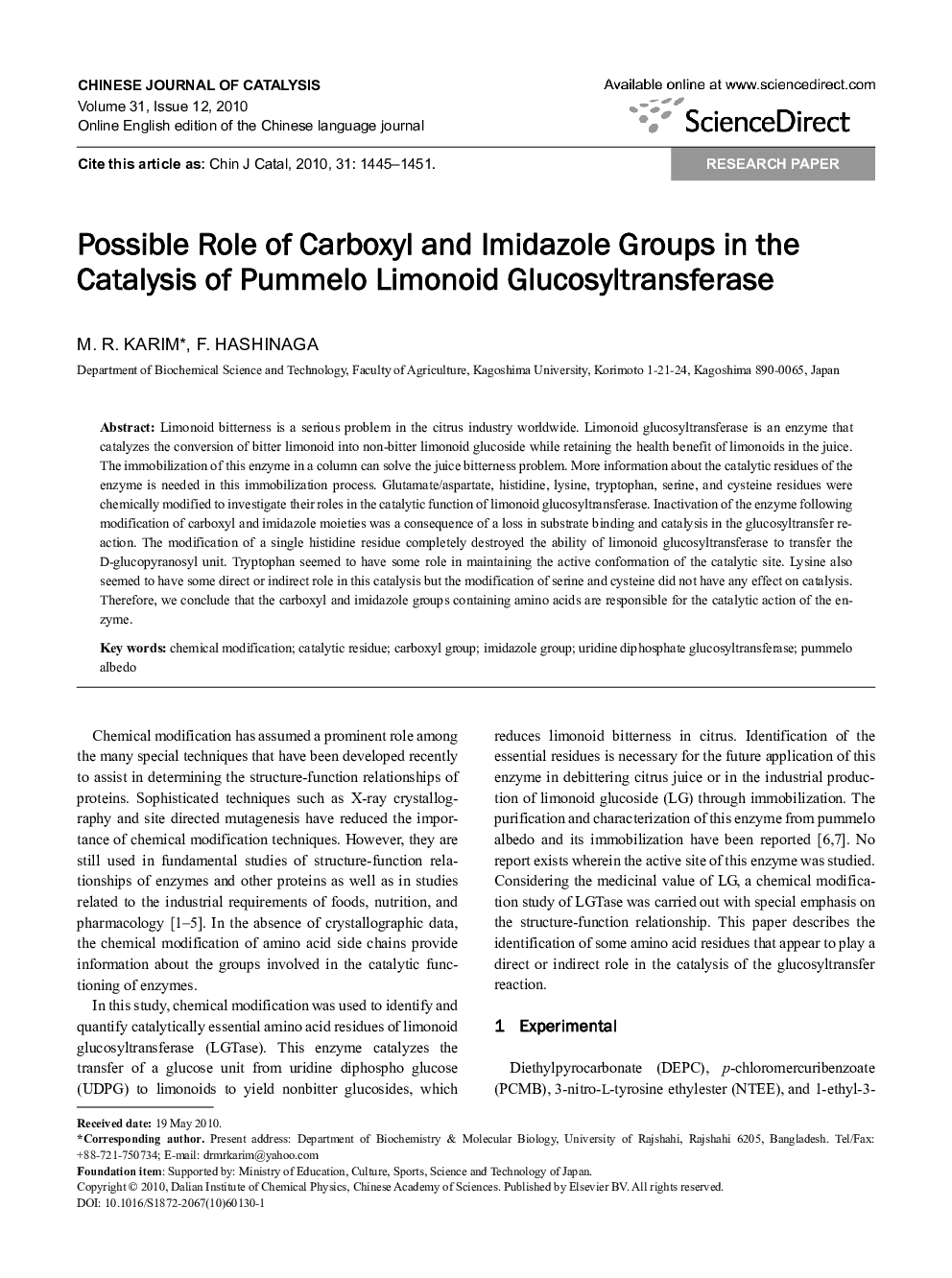| کد مقاله | کد نشریه | سال انتشار | مقاله انگلیسی | نسخه تمام متن |
|---|---|---|---|---|
| 59302 | 1419472 | 2010 | 7 صفحه PDF | دانلود رایگان |

Limonoid bitterness is a serious problem in the citrus industry worldwide. Limonoid glucosyltransferase is an enzyme that catalyzes the conversion of bitter limonoid into non-bitter limonoid glucoside while retaining the health benefit of limonoids in the juice. The immobilization of this enzyme in a column can solve the juice bitterness problem. More information about the catalytic residues of the enzyme is needed in this immobilization process. Glutamate/aspartate, histidine, lysine, tryptophan, serine, and cysteine residues were chemically modified to investigate their roles in the catalytic function of limonoid glucosyltransferase. Inactivation of the enzyme following modification of carboxyl and imidazole moieties was a consequence of a loss in substrate binding and catalysis in the glucosyltransfer reaction. The modification of a single histidine residue completely destroyed the ability of limonoid glucosyltransferase to transfer the D-glucopyranosyl unit. Tryptophan seemed to have some role in maintaining the active conformation of the catalytic site. Lysine also seemed to have some direct or indirect role in this catalysis but the modification of serine and cysteine did not have any effect on catalysis. Therefore, we conclude that the carboxyl and imidazole groups containing amino acids are responsible for the catalytic action of the enzyme.
This paper describes our investigation into the catalytic residues of pummelo limonoid glucosyltransferase. Chemical modification studies confirm the role of the histidine, tryptophan, aspartate/glutamate, and lysine residues in catalysis. A tentative catalytic mechanism is proposed.Figure optionsDownload as PowerPoint slide
Journal: Chinese Journal of Catalysis - Volume 31, Issues 11–12, 2010, Pages 1445–1451